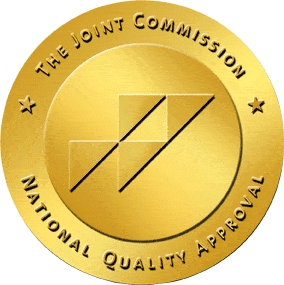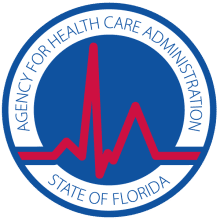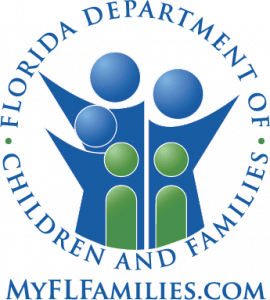
We’ve all seen the image of the rolled-up dollar bill and a line of white powder disappearing through it. Whether in film, on TV, or in real life, the image is unmistakable – the cut line and the trail of cocaine. And though cocaine can be abused in its various forms, snorting it is perhaps the most recognizable. But the abuse of drugs by inhalation does not end with coke. Other commonly snorted drugs include Methamphetamine, Heroin, Opioids such as OxyContin, Percocet and Vicodin, and stimulants like Ritalin and Adderall. However, more today than ever, many people who abuse drugs – especially prescription pain pills – have taken to crushing them into powder and then inhaling them through the nose, also called nasal insufflation.
The nonmedical use of painkillers and prescription pain meds is at epidemic proportions in the United States, affecting upwards of 12.5 million people each year. Many may think that it is just the abuser hurting themselves, but that is simply not the case. Prescription pain meds have a wide range of effects in the community and can destroy friendships and family relationships alike.
The concept of extended-release prescription opioid medication has never been more in the public eye than it is today with the opioid epidemic and related scandal surrounding Purdue Pharma. With the dissolution of the company that invented in distributed OxyContin, we have all understood a little bit more about these pills. However, while the concept of extended release was expected to reduce the addictive properties of the drug, some took to crushing these pills to get a more immediate and intense high.
Why Do People Snort Pills?
Many begin their journey on opioid prescription medication with the best of intentions Dash to manage their pain. However, as the body becomes accustomed to the medication and tolerance increases, so to do the dosages. Eventually, addicts develop the desire to have a faster, more powerful high that can only be achieved by snorting a crushed version of the medication.
Two put that in perspective, when taken orally, prescription opioids can take between 30 and 60 minutes, sometimes even longer to reach peak effect.
The powdered form of pain medicine is typically absorbed much more quickly into the bloodstream through the sensitive soft tissues in the nasal cavity and lanced on a direct and immediate route to the brain. With some opioids, the “high” effect can be nearly instantaneous. And with that intense and rapid high inevitably comes an as-quick end of the sensation, often resulting in a shorter timeframe between doses. Moreover, the drug isn’t processed in the same way as if it was swallowed. Ingesting a pill through the mouth allows it to run its course through the digestive system, metabolizing it, processing it through the liver and distributing it after it has been broken down. By snorting, this process is bypassed.
Five Harmful Effects of Snorting
Taking any medication in a manner not intended or prescribed is a form of drug misuse. Any drug abuse involves potential risks to your health and can lead to multiple complications. In particular, there are serious concerns related to snorting pills that compound the dangers normally associated with abusing prescription drugs. These side effects involve a variety of unpleasant and damaging possibilities, such as:
- Throat irritation and infections. When forcefully inhaled, powder or particulates can be inadvertently swallowed or may drip down the throat in nasal mucus. This irritation can also lead to hoarseness.
- Sinus irritation and infections. This occurs due to unnaturally forcing dangerous substances through the nasal and sinus lining. Problems can occur suddenly and do not require long-term abuse, as is often assumed.
- Damage to nasal membranes. Initially, the production of mucus is boosted to protect the nasal membranes as a natural defense against foreign bodies entering the nasal passages. Repeated administration by this method becomes less effective. Extended use can cause severe damage, resulting in permanent destruction of the nasal tissues. Nosebleeds can also result.
- Risks of toxicity increase due to rapidly reached serum concentration levels in the blood.
- Transmission of disease. Sharing a straw or dollar bill to suck the powder up into the nose adds significant risk of contracting Hepatitis C or other blood-borne diseases.
Helping to Prevent Snorting
In addition to the general risks associated with abusing drugs, the side effects of snorting have prompted new approaches to combat substance abuse. Important new developments are taking place to help curtail certain abusive behaviors. Several pharmaceutical companies and drug manufacturers have begun to incorporate preventative measures directly into the drugs themselves.
These measures, called opioid abuse-deterrent properties (OADP), involve creating special formulations for both current and new prescription medicines. The resulting pills are prepared with built-in qualities that make it much more difficult to abuse the medications. As it pertains to preventing snorting, some pills have the following properties:
- Physical barriers or coatings that prevent or resist crushing
- Antagonistic combinations or additives that interfere with, reduce or defeat euphoria
- Aversion substances that cause burning or discomfort to nasal passages when snorted
- Delivery system designs that, if crushed, result in particles too large to absorb through nasal mucosa
Initial reports on the effectiveness of these and other OADP approaches have been positive. The new formulations are garnering increasing support from healthcare and rehabilitative professionals, and several states have already enacted legislation encouraging their use. To learn more about what is driving prescription drug use, you will find another resource here.
1Hughes, A., Williams, M. R., Lipari., R. N., Bose, J., Copello, E. A. P., & Kroutil, L. A. (2016, September). Prescription drug use and misuse in the United States: Results from the 2015 National Survey on Drug Use and Health. NSDUH Data Review. Retrieved from https://www.samhsa.gov/data/sites/default/files/NSDUH-FFR2-2015/NSDUH-FFR2-2015.htm



